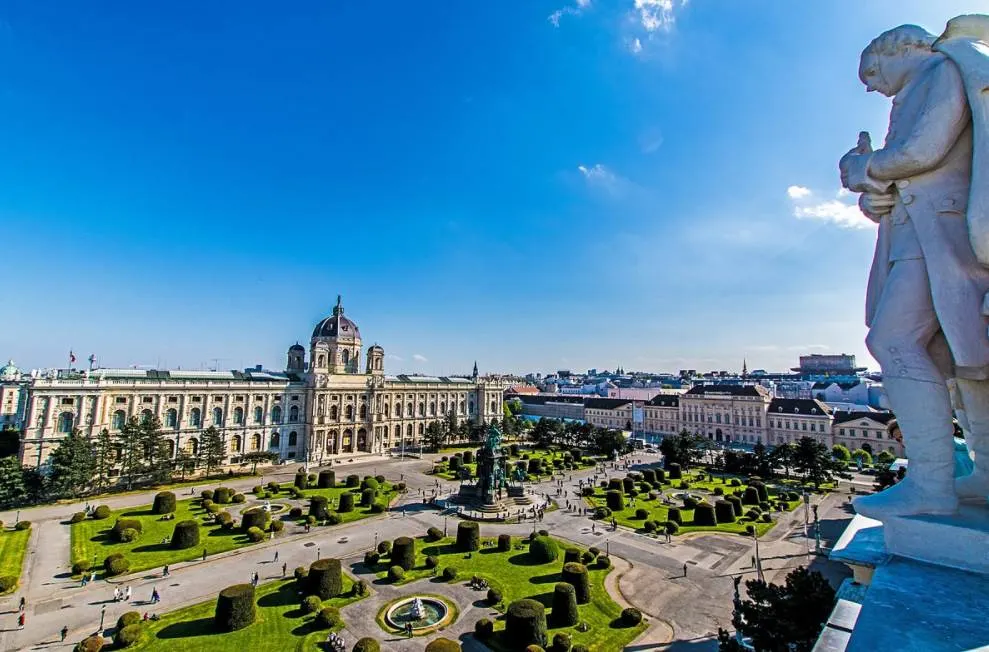Although this master of the Northern Renaissance is best known for his paintings depicting peasants, he was also one of the most renowned landscape artists of his generation.
Pieter Bruegel the Elder (1525-1569) was nicknamed “Peasant Bruegel” because his most famous paintings depict people from the lower classes in the Low Countries.
He also produced a series of landscapes that have become some of the most iconic paintings of the Renaissance.
In this article, you’ll discover some of the most interesting facts about The Hunters in the Snow by Pieter Bruegel the Elder, a fascinating work of art for multiple reasons.
1. It was completed during the final decade of Bruegel’s life
Pieter Bruegel the Elder was a renowned painter and printer who was born in or near the city of Breda in the modern-day Netherlands.
Some art historians suggest that he was born and raised in the small town of Brueghel just near Breda. This could explain his interest in depicting peasants throughout his career.
He didn’t stay in his hometown because he was mentioned as being a member of the Guild of Saint Luke in Antwerp in the year 1551. Not much more is known about his initial training.
What’s remarkable is that Bruegel traveled to Italy shortly after. He stayed in Italy until 1554 and probably even reached the island of Sicily, which was very unusual at the time.
He was back in Antwerp by 1555 and established himself as an independent master who designed prints for Cock, a large local publisher.

He picked up oil painting as well and completed The Hunters in the Snow around 1565, just 4 years before he passed away in 1569.
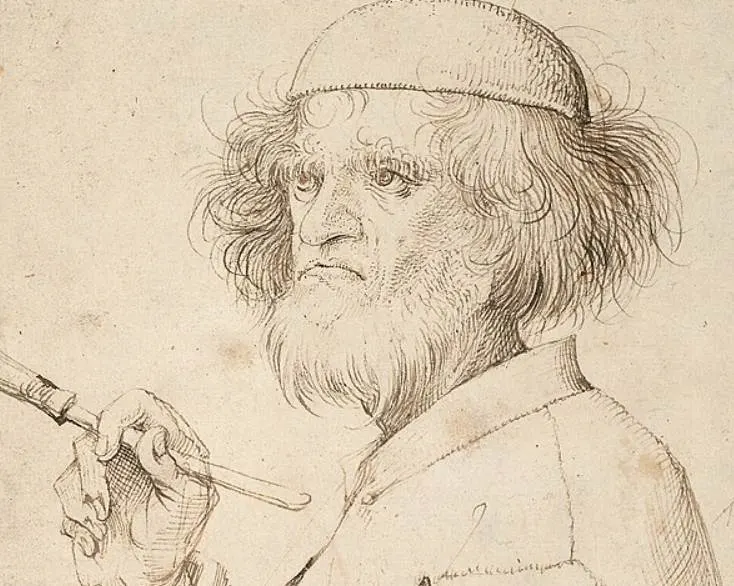
2. It depicts a winter landscape in December or January
The composition of the painting depicts the scene from an elevated position. We can see a group of hunters who are returning from their hunt.
The roofs of the houses are covered in snow and people can be seen skating and curling on a frozen lake down in the valley.
The smoke from the woodstoves that heat the houses further emphasizes the fact that it’s really cold.
This winter landscape depicts a scene that takes place in January or December. the coldest time of the year in the Low Countries.
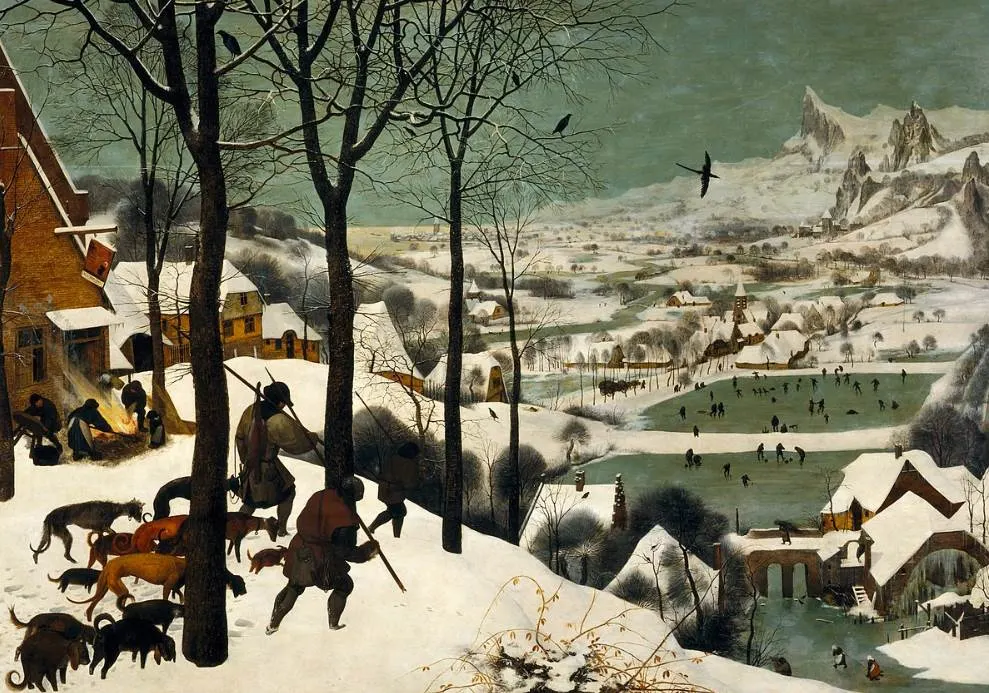
3. It was part of a series of landscapes of which 5 paintings have survived
The artist probably earned a commission that revolved around the “Labours of the Month,” a tradition during the Middle Ages and Renaissance.
This revolved around 12 scenes that depict rural activities that took place during the months of the year.
Bruegel’s series was merged into 6 paintings that each depict two months of the year. 5 of these paintings survived and a preparatory drawing and numerous copies exist of the 6th.
Apart from December and January that are depicted in The Hunters in the Snow, these are the other works in this fascinating series (all of them completed in 1565):
- February and March – The Gloomy Day
- April and May – A drawing that was painted by several other artists
- June and July – The Hay Harvest
- August and September – The Harvesters
- October and November – The Return of the Herd

4. The hunters appear to be returning from an unsuccessful expedition
The only thing that local peasants could due when everything is frozen is to hunt. That’s why the painting that represents the months of December and January in the series highlights the hunters.
The first thing e can notice about these hunters is that they appear to be rather miserable. Their endeavor was unsuccessful and all they could catch was a meager fox.
The dogs that accompany them don’t look too happy other as they display a subdued demeanor. There will be little to eat when they return home, that’s for sure.

5. The magpies strengthen the darkness of the gloomy winter landscape
The people on the lake appear to be having a good time, a sheer contrast to the gloomy prospect of the hunters who are facing a hungry day.
Crows and Magpies have traditionally been associated with the devil in Dutch culture and several can be seen sitting in the leafless trees.
A magpie is even flying over the scene as if he is casting a sense of doom upon the already gloomy landscape.
It’s fair to conclude that Pieter Bruegel the Elder and the people living in his time didn’t like the harsh winter months, especially when there is hardly any food on the table.
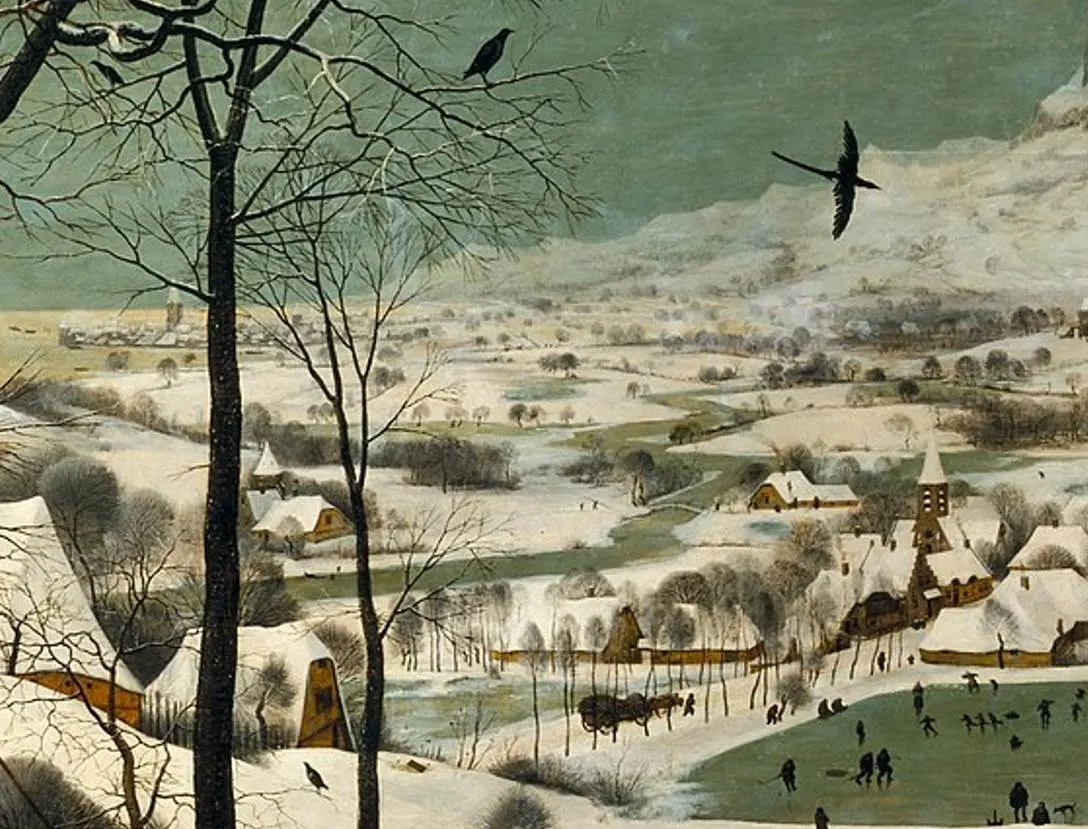
6. The artist added a remarkable feature in the top right corner
4 of the 5 surviving paintings feature craggy mountains, elements that the artist included to complete the overall composition.
There aren’t any mountains like this in the Netherlands and the Flanders region of modern-day Belgium where Bruegel lived. A small village is nestled against these jagged peaks.
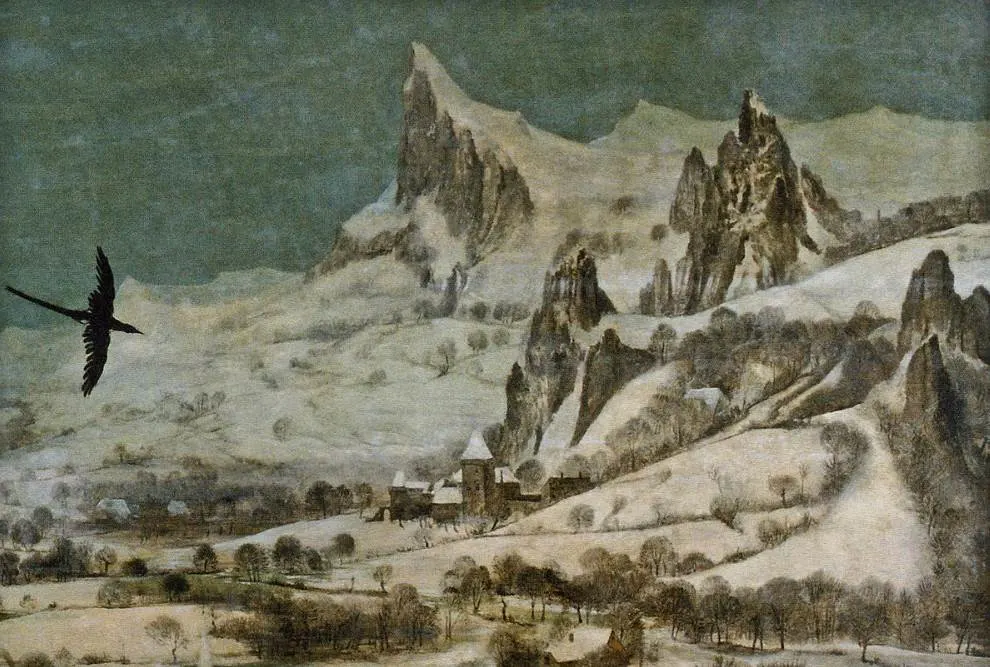
7. How big is The Hunters in the Snow by Pieter Bruegel the Elder?
All of the paintings in this series have approximately the same size. They aren’t small by any means which makes it remarkable that Bruegel managed to complete the entire series in the same year (1565).
The Hunters in the Snow is a medium-sized oil on panel painting that has dimensions of 117 × 162 centimeters (46 × 63.75 inches).
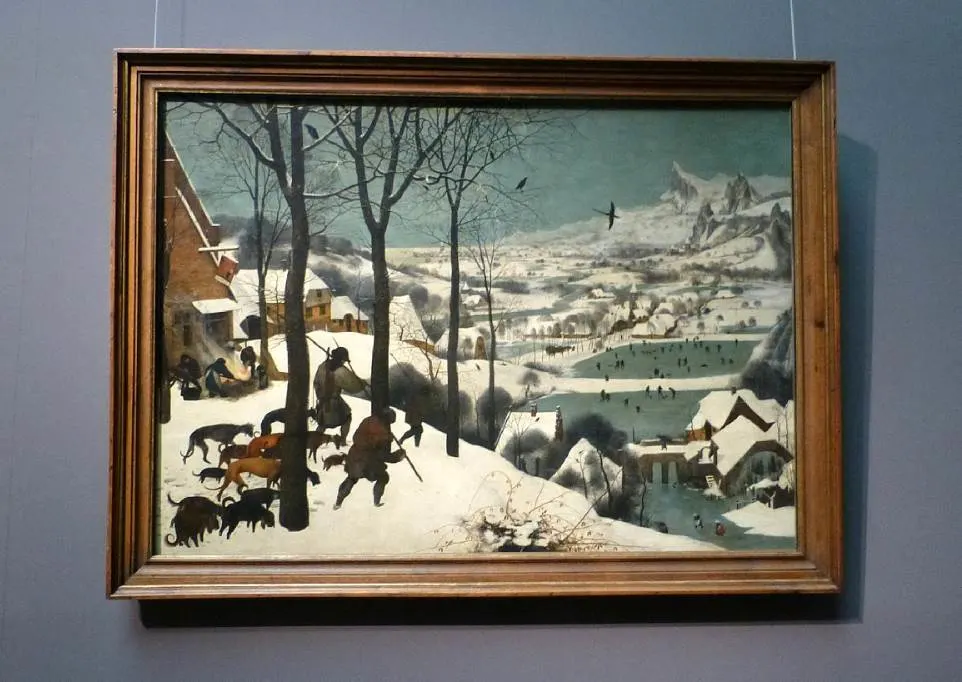
8. Where is the painting located today?
The 5 surviving paintings don’t hang together anymore, but 3 of them including this one, can be found in the same museum in Vienna, Austria.
The Hunters in the Snow, The Return of the Herd, and The Gloomy Day are part of the collection of the Kunsthistorisches Museum.
The Harvesters is on display at the MET in New York City, and The Hay Harvest is located at Lobkowicz Palace, a section of the immense Prague Castle in Prague.
